Photos of the migrant caravan and the Trump military response tell different stories
Donald Trump has made his fear-mongering characterization of the Central American migrant caravan a centerpiece of his midterm election appeals—to the chagrin of Republican leaders who would rather he tout the economic successes of his first two years in office.


Donald Trump has made his fear-mongering characterization of the Central American migrant caravan a centerpiece of his midterm election appeals—to the chagrin of Republican leaders who would rather he tout the economic successes of his first two years in office.
Trump has spent weeks whipping up emotions over the group of Central Americans, including the use of a final-days campaign ad that has already been pulled by broadcasters over its overtly racist message.
The horrors of the caravan as a major campaign concern has mostly lived in the imagination of Trump and his supporters. Conspiracy theorists and social-media hoaxes have attempted to portray the migrants as a destructive, marauding horde about to descend on American communities.
Trump boasted about the barbed wire being unfurled by US armed-forces members he sent to the border along the Rio Grande as “beautiful.” Images of soldiers rolling out concertina wire fencing make it appear the US is indeed preparing for an invasion. Yet the deployment of soldiers is aimed to provide “support” for customs and border agents. They are not assigned to anything close to frontline combat duty, as Trump’s rhetoric may suggest.
The president created a photo op to suggest a concrete reaction by his administration to civilians, on foot, who are still hundreds of miles away from where they could seek asylum in the US.

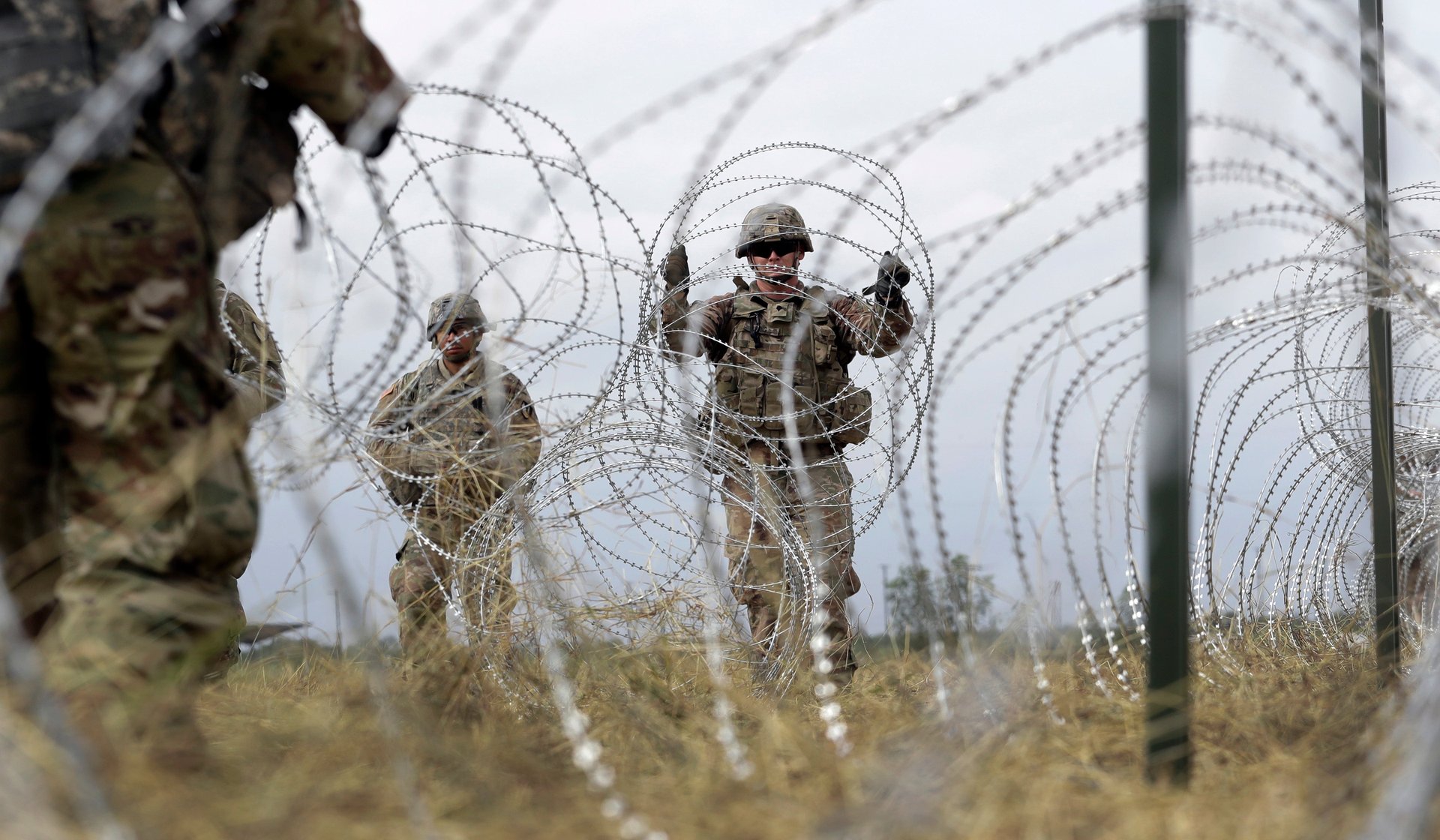
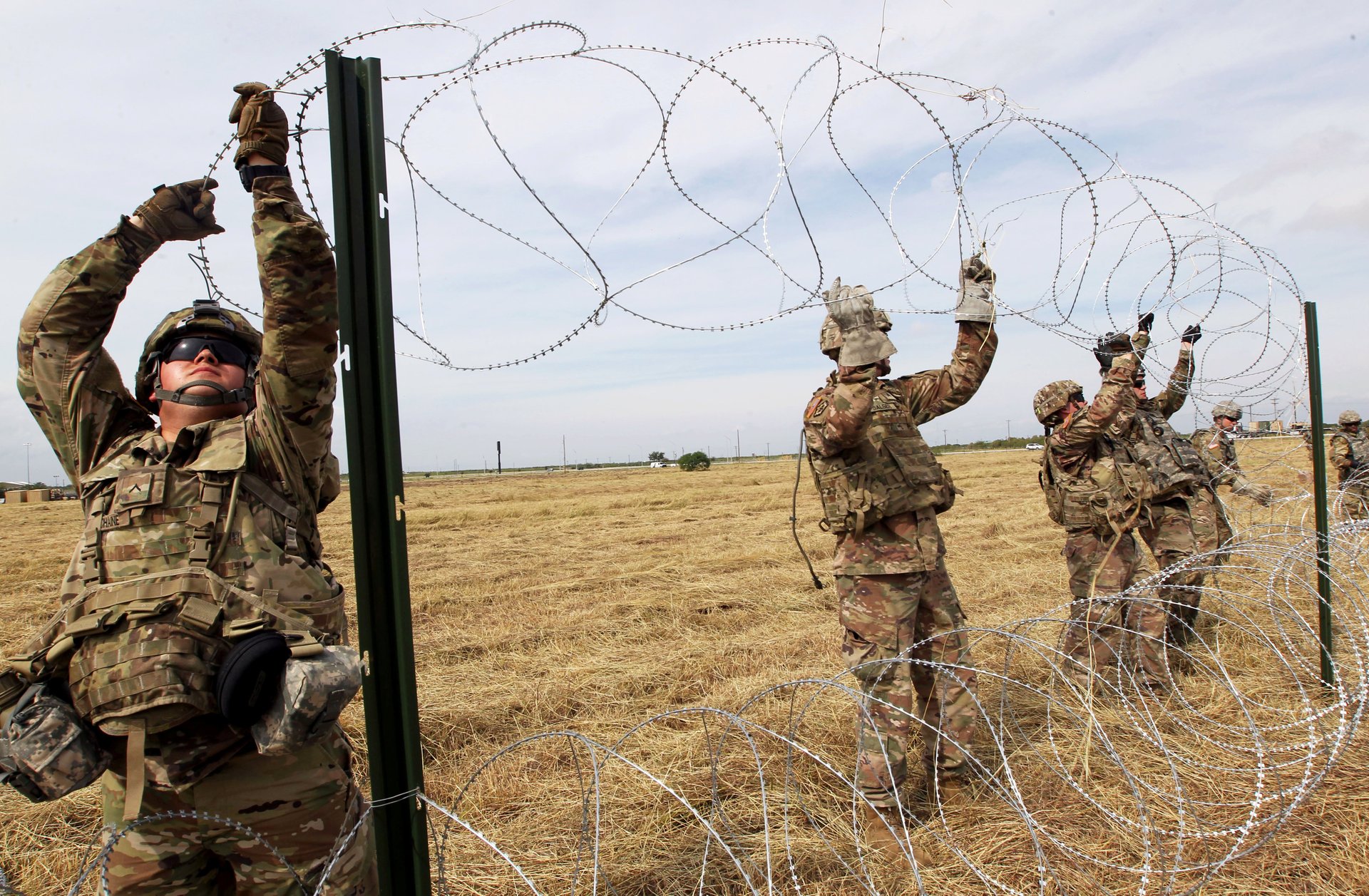
The caravan is still no where near the US border, with the group of migrants furthest along still more than 500 miles from the US border. For those who will even try to make it to the US, it is expected they will seek to apply for asylum, not simply try to slip through the border and live undocumented.
Images from photographers documenting the caravan highlight the prevalence of young children. We are seeing sensitive moments between family members and their physical and emotional exhaustion.
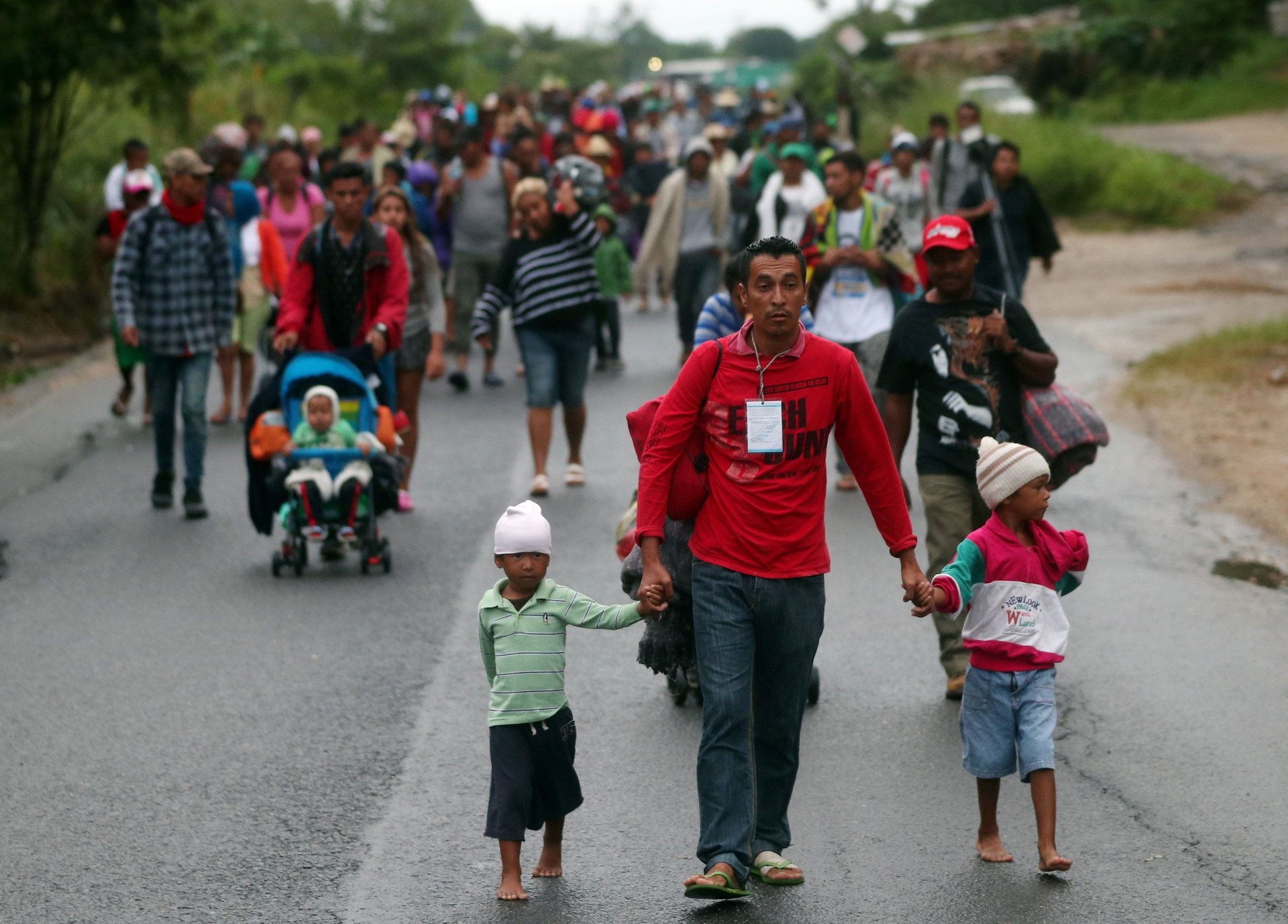
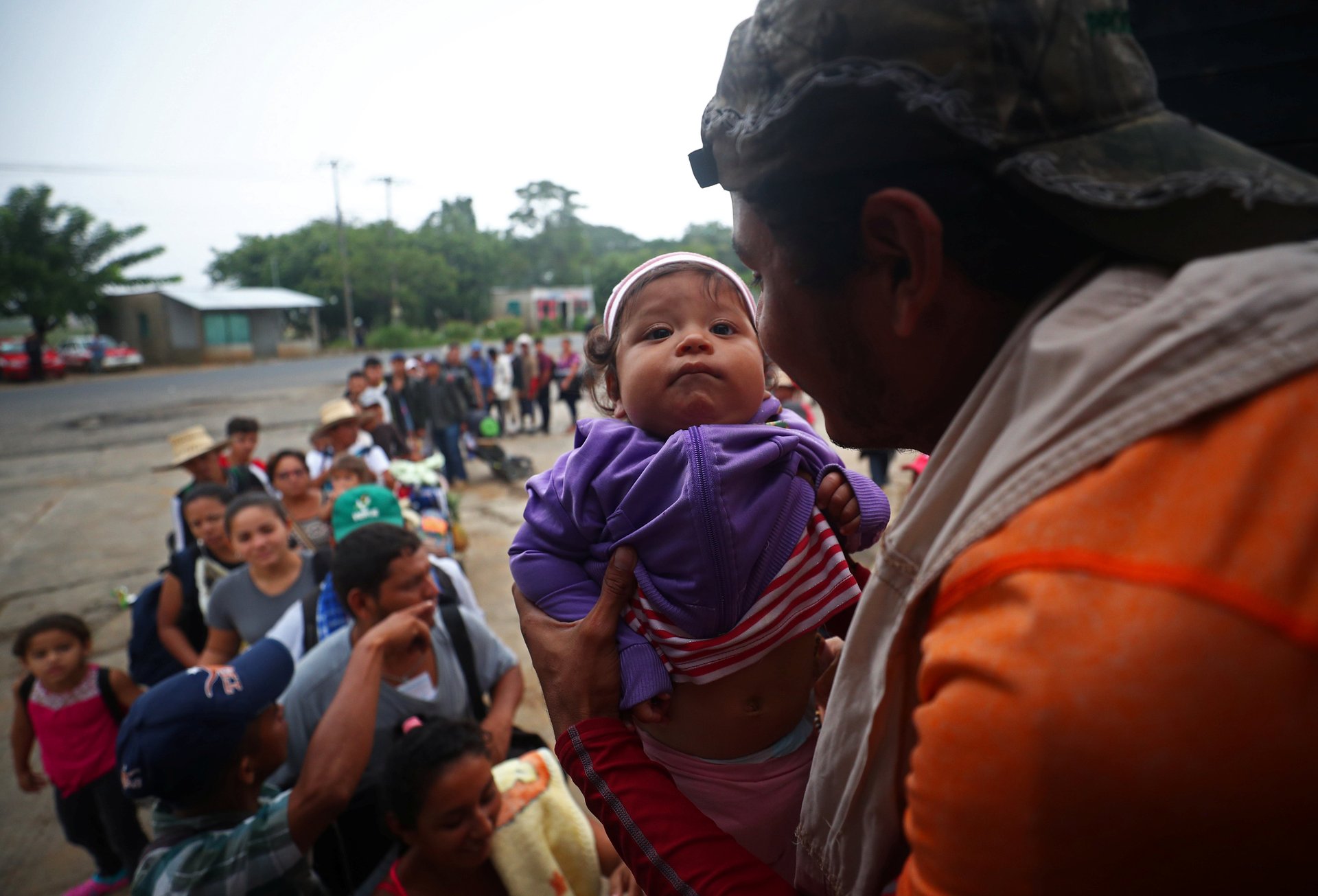
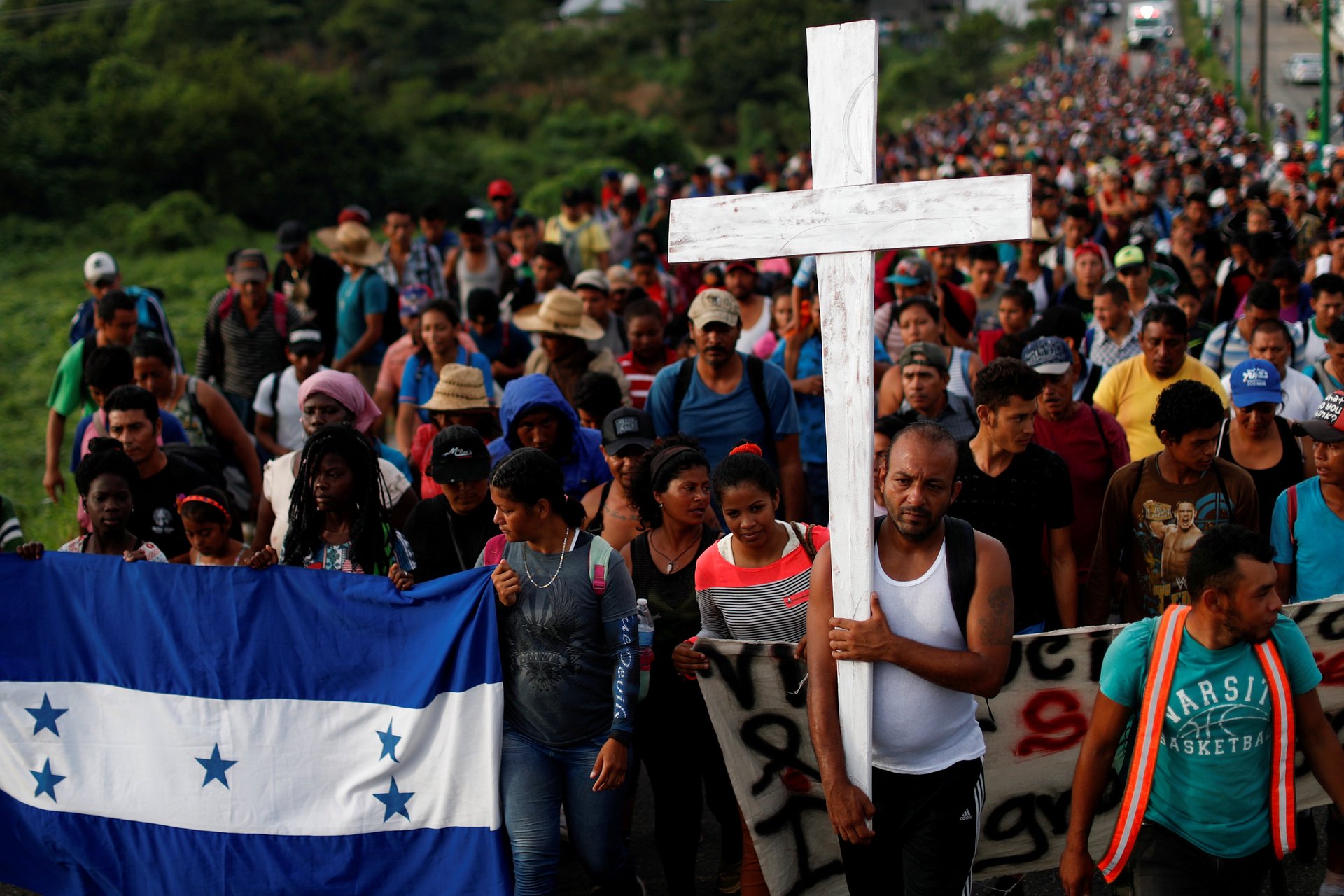
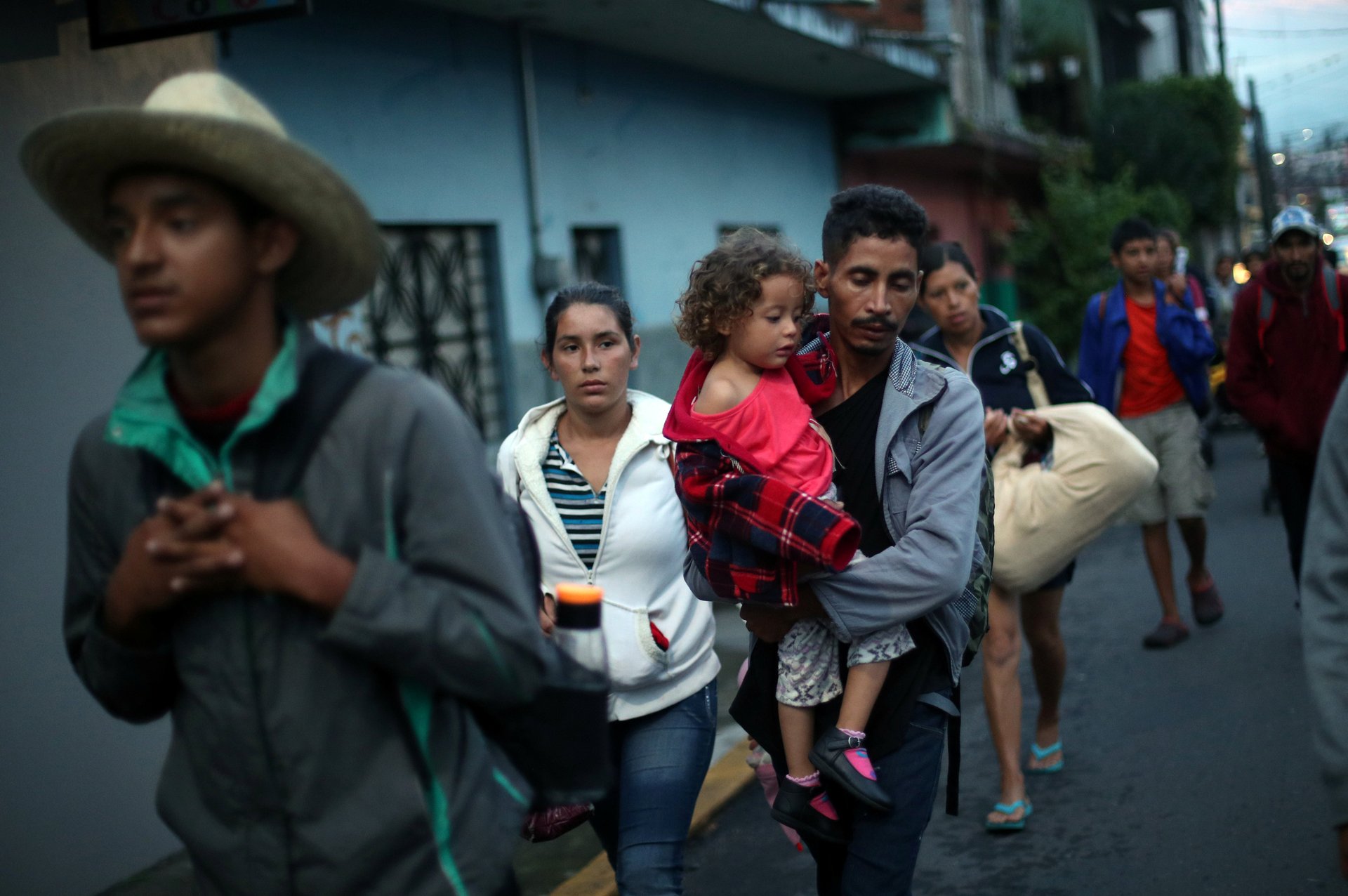
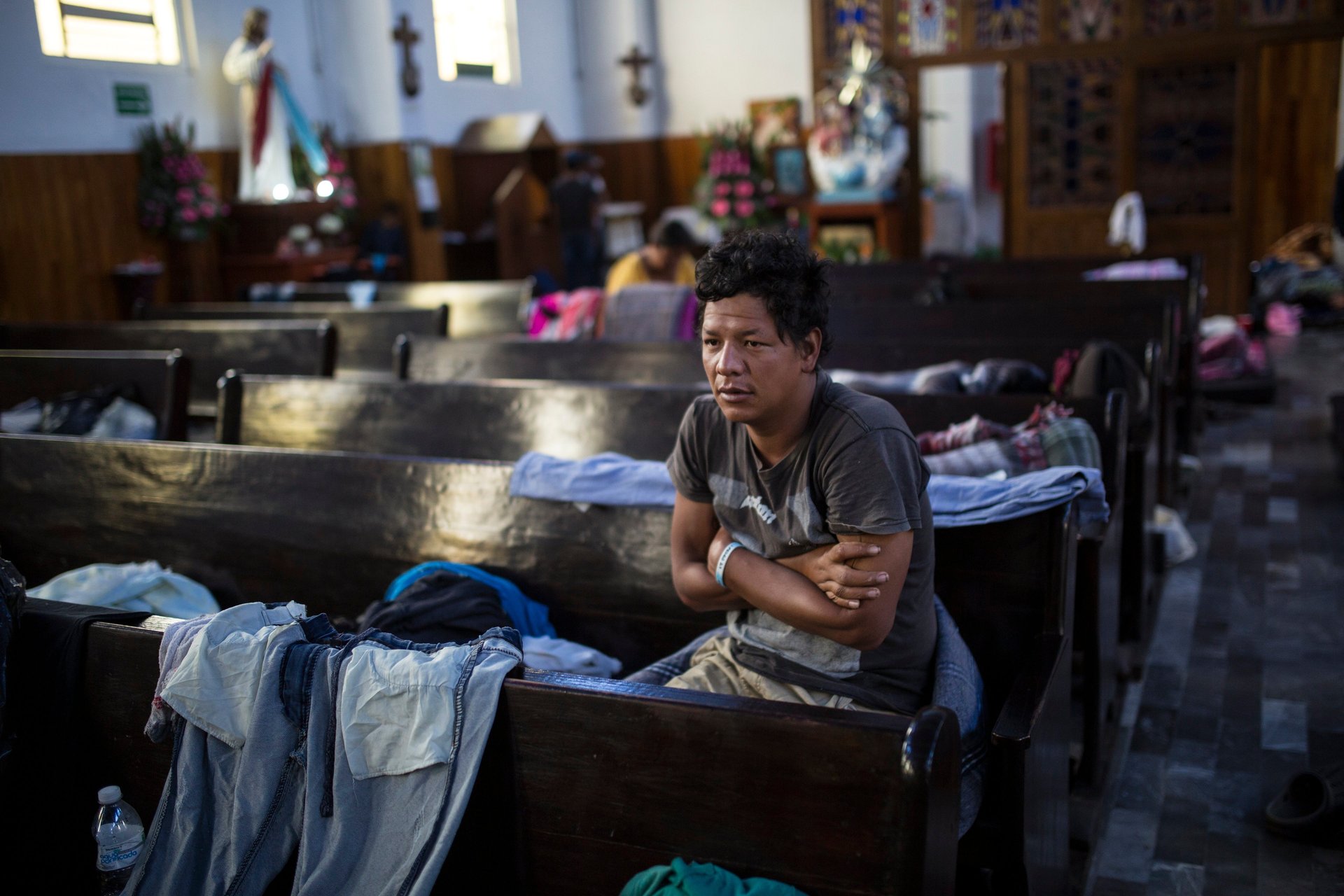
Today (Nov. 5) it was reported the deployment of US troops to the border could cost $220 million, all while the Pentagon has said it sees no security threat from the caravan.